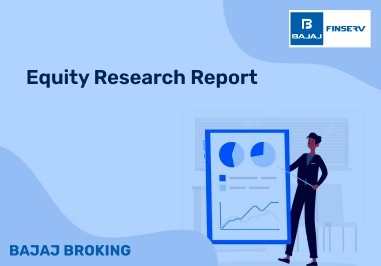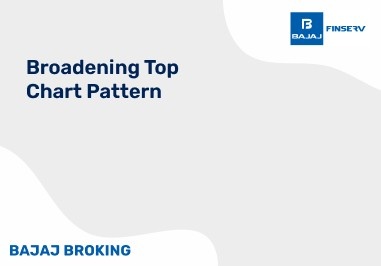BAJAJ BROKING
Infonative Solutions IPO is Open!
Open a Free Demat Account
Trade Now, Pay Later with up to 4x
Track Market Movers Instantly
Investing in Mutual Funds: Does Mutual Funds Need Demat Account?
A demat account serves as a digital repository where investors can hold their securities in a dematerialized or digital format. It covers a spectrum of securities, including equity shares, bonds, debentures, Exchange Traded Funds (ETFs), and even mutual funds. The need for demat account required for mutual fund investment and its advantages are explored below.
Why Demat Accounts?
Before the era of dematerialization, securities were recorded on physical certificates, raising concerns about safety and security. Over time, these certificates could wear out, and the possibility of misplacing them was a constant worry. Transferring such securities required sending physical certificates via mail, a process fraught with risks, including signature mismatches leading to cancelled transfers.
Demat accounts addressed these concerns effectively, offering several key benefits:
1. Centralised Digital Records:
Multiple securities could now be consolidated and digitally managed in a single demat account, simplifying the tracking and oversight of investments.
2. Swift Delivery:
Transfers within demat accounts are rapid, reducing the risk of defaults and enabling quick delivery of securities.
3. Enhanced Security:
Digital storage eliminates the risk of losing or damaging physical certificates, providing a secure environment for investments.
Do You Need A Demat Account For Mutual Funds?
In India, there are two primary depositories, NSDL (National Securities Depository Limited) and CDSL (Central Depository Services Limited), with which investors can open a demat account. These depositories appoint Depository Participants (DPs) to act as intermediaries between investors and the depositories.
Opening a demat account is akin to having a bank account for investments. To transfer securities from one demat account to another, investors submit a Delivery Instruction Slip (DIS) to their DP. The DIS, resembling a chequebook, includes the receiver’s demat account details, ensuring seamless execution of transfers.
Answering – Do We Need Demat Account For Mutual Funds and Its Pros and Cons?
For mutual fund investments, having a demat account is not mandatory. While investors have the option to hold mutual funds in demat accounts, they can also choose to maintain them under investor folios. However, it’s important to note that a specific category of mutual funds called exchange-traded funds (ETFs) is typically purchased through stock exchanges and would, therefore, require a demat account.
- Pros of Demat Accounts for Mutual Funds
When mutual fund investments are held in a demat account, they are consolidated into a single location. In contrast, investments held in investor folios may be scattered across different mutual fund houses, requiring investors to manage records across multiple platforms. Demat accounts simplify the process, reducing the need for separate login credentials and potentially encouraging better management and review of investments.
- Cons of Demat Accounts for Mutual Funds
Websites of fund houses and Registrar & Transfer Agents (R&TAs) provide investor-friendly statements for investments held in folios, which may be more challenging to access when using demat accounts. Demat account statements typically provide only quantitative transaction data, while cost-related information must be obtained from contract notes. This additional step may require further organisation of investment records. Additionally, demat accounts come with costs, including annual maintenance charges and ancillary fees.
How to Invest in Exchange Traded Funds (ETFs) Through Demat Accounts
Investing in ETFs through demat accounts mirrors the process of purchasing shares. Investors place buy orders for specific ETF schemes on stock exchanges. Stock exchanges such as BSE and NSE offer dedicated mutual fund platforms for this purpose. Investors can place market orders or limit orders, with market orders executing at prevailing market prices and limit orders only triggering at specified target prices.
Different Ways to Invest in Mutual Funds
There are different ways to invest in mutual funds, depending on your convenience, preference, and objective. Here are some of the common modes of investing in mutual funds:
- Directly through the fund house:
You can invest in mutual funds directly through the website or app of the asset management company (AMC) that offers the scheme. You need to register yourself with the AMC, provide your KYC details, choose the scheme and amount, and make the payment online. You will receive a confirmation email or SMS with your folio number and units allotted. This mode of investment is also known as direct plan, which has a lower expense ratio than regular plan, as there is no intermediary involved. You can also visit the nearest branch of the AMC and submit a physical application form along with a cheque or demand draft.
- Through an online investment platform:
You can also invest in mutual funds through an online platform that aggregates various schemes from different AMCs. You need to register yourself with the platform, provide your KYC details, choose the scheme and amount, and make the payment online. You will receive a confirmation email or SMS with your folio number and units allotted. Some of the online platforms also offer robo-advisory services, which help you select the best schemes based on your risk profile and goals.
- Through a distributor:
You can also invest in mutual funds through a distributor, who is a registered agent or broker of the AMC. You need to contact the distributor, provide your KYC details, choose the scheme and amount, and make the payment online or offline. The distributor will submit your application to the AMC and you will receive a confirmation email or SMS with your folio number and units allotted. This mode of investment is also known as regular plan, which has a higher expense ratio than direct plan, as there is a commission paid to the distributor. You can also get advice and guidance from the distributor regarding your investment decisions.
- Through CAMS and Karvy:
CAMS (Computer Age Management Services) and Karvy are two of the largest registrars and transfer agents (RTAs) in India, who provide services to various AMCs. You can invest in mutual funds through their websites or apps, by registering yourself, providing your KYC details, choosing the scheme and amount, and making the payment online. You will receive a confirmation email or SMS with your folio number and units allotted. You can also visit their nearest branches and submit a physical application form along with a cheque or demand draft.
- Through a demat account:
A demat account is an account that holds your securities in electronic form. You can invest in mutual funds through your demat account, by logging into your trading account, choosing the scheme and amount, and making the payment online. You will receive a confirmation email or SMS with your folio number and units allotted. The units will be credited to your demat account within two working days. This mode of investment allows you to view and manage all your investments in one place. However, you may have to pay some charges to your depository participant (DP) for maintaining your demat account.
These are some of the different ways to invest in mutual funds in India. You can choose any mode that suits your convenience, preference, and objective. However, before investing in any scheme, you should do your own research, understand the risks and returns involved, read the scheme information document (SID) carefully, and consult a financial advisor if needed.
Conclusion
Choosing whether to hold mutual fund units in demat accounts or investor folios is a matter of personal preference and convenience. While demat accounts offer consolidation and simplified management, they also come with associated costs and require additional effort for accessing certain types of statements. Mutual fund investors can make this decision based on their individual needs and preferences, tailoring their investment approach accordingly.
Share this article:
Read More Blogs
Our Secure Trading Platforms
Level up your stock market experience: Download the Bajaj Broking App for effortless investing and trading













